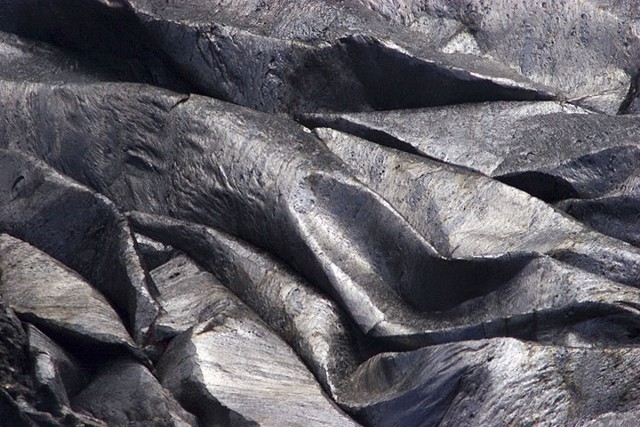Report on Erta Ale (Ethiopia) — June 2008
Bulletin of the Global Volcanism Network, vol. 33, no. 6 (June 2008)
Managing Editor: Richard Wunderman.
Erta Ale (Ethiopia) Active lava lake visited in February 2008
Please cite this report as:
Global Volcanism Program, 2008. Report on Erta Ale (Ethiopia) (Wunderman, R., ed.). Bulletin of the Global Volcanism Network, 33:6. Smithsonian Institution. https://doi.org/10.5479/si.GVP.BGVN200806-221080
Erta Ale
Ethiopia
13.601°N, 40.666°E; summit elev. 585 m
All times are local (unless otherwise noted)
Around 2-3 February 2008, a Volcano Discovery tour visited Erta Ale (figures 18-21). Tom Pfeiffer reported that the northern pit crater contained a lake of molten lava ~ 75 m across. Strong spattering and bursting bubbles were seen. At times, the lava lake rose and flooded the lower terrace. During this phase the usual fountains ceased. Richard Roscoe, who also visited during February 2008, presents animations of the flooding on his Photovolcanica website. He also shows photos of strong fountaining associated with falling lava lake levels.
 |
Figure 18. Wide-angle photo showing the lava lake at Erta Ale, February 2008. Taken with fisheye-lens and a digital reflex camera. Courtesy Marco Fulle. |
 |
Figure 19. Folds developed in the crust of the lava lake at Erta Ale, February 2008. Courtesy of Tom Pfeiffer (Volcano Discovery). |
 |
Figure 20. Rising magmatic gases drove fountains like this one emerging above the surface of the lava lake at Erta Ale, February 2008. Courtesy of Tom Pfeiffer (Volcano Discovery). |
Occasionally, magmatic gas released in the middle of the lake created a zone a few meters in diameter where fountains typically lasted ~ 1 minute (figure 20). Thin threads of lava (Pelee's hair) are visible in some lava-fountain photographs. Richard Roscoe also features similar photos. Marco Fulle noted strong spattering when lava was drawn down (subducted) into the lake.
A Volcanologique de Genève (SVG) trip on 8-9 February 2008 noted extensions of ropy lava in the N crater. The lake was little changed from the group's last visit in 2005. The group visited the N Crater, and, given its constant degassing, was able to take gas samples. They also measured the lake's surface temperature (700°C). The descent into this crater, seemingly easy, was made difficult by a mantle of very unstable lava scoria. An elevated level of the lava lake halted a subsequent descent.
References. Rivallin, P., and Mougin, D., 2008, Trip report of Pierrette Rivallin and Dédé Mougin: LAVE Bulletin, no. 79, May 2008.
Geological Summary. The Erta Ale basaltic shield volcano in Ethiopia has a 50-km-wide edifice that rises more than 600 m from below sea level in the Danakil depression. The volcano includes a 0.7 x 1.6 km summit crater hosting steep-sided pit craters. Another larger 1.8 x 3.1 km wide depression elongated parallel to the trend of the Erta Ale range is located SE of the summit and is bounded by curvilinear fault scarps on the SE side. Basaltic lava flows from these fissures have poured into the caldera and locally overflowed its rim. The summit caldera usually also holds at least one long-term lava lake that has been active since at least 1967, and possibly since 1906. Recent fissure eruptions have occurred on the N flank.
Information Contacts: Tom Pfeiffer, Volcano Discovery (URL: http://www.VolcanoDiscovery.com/); Marco Fulle, Osservatorio Astronomico, Trieste, Italy; Richard Roscoe (URL: http://www.photovolcanica.com/).


